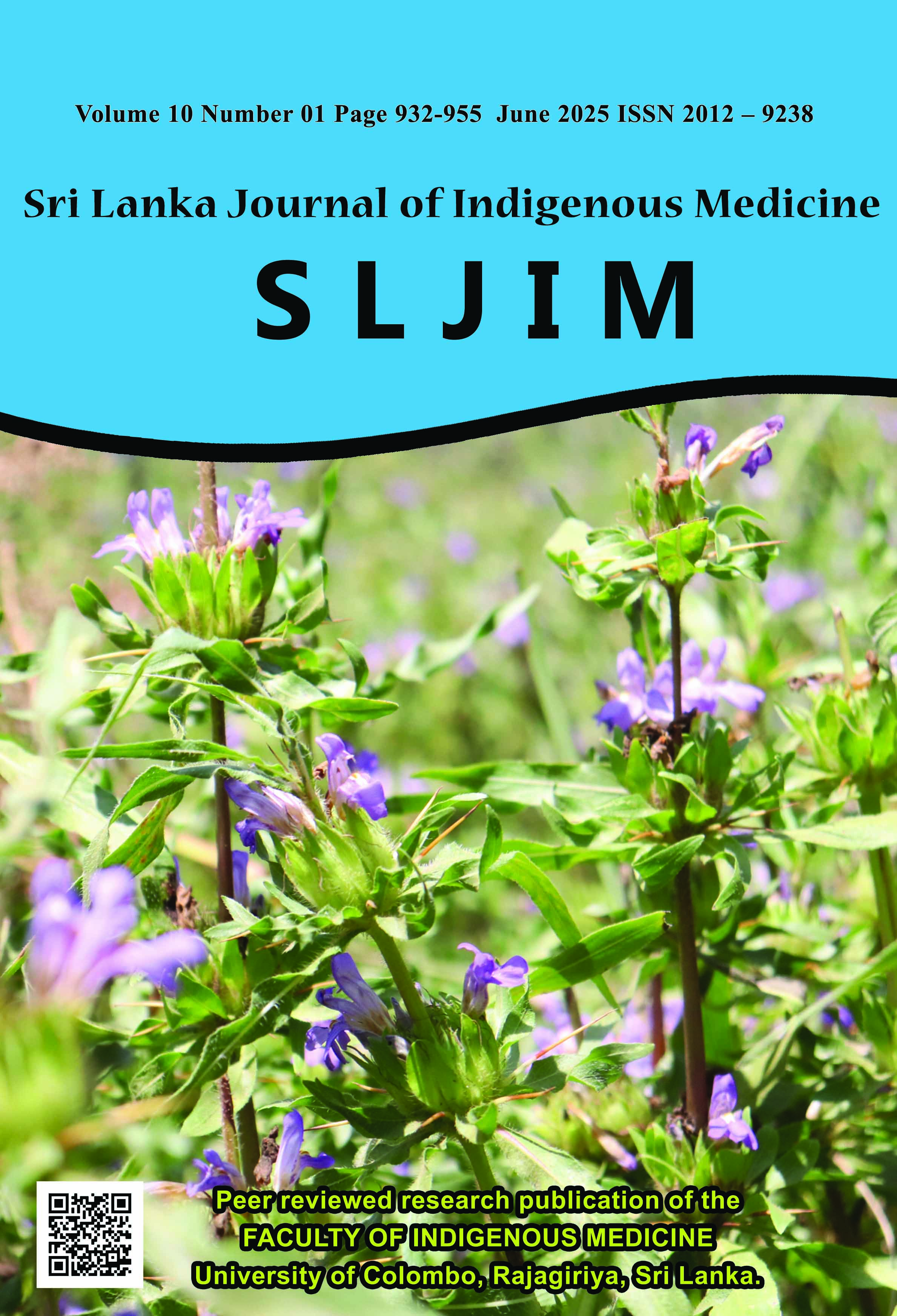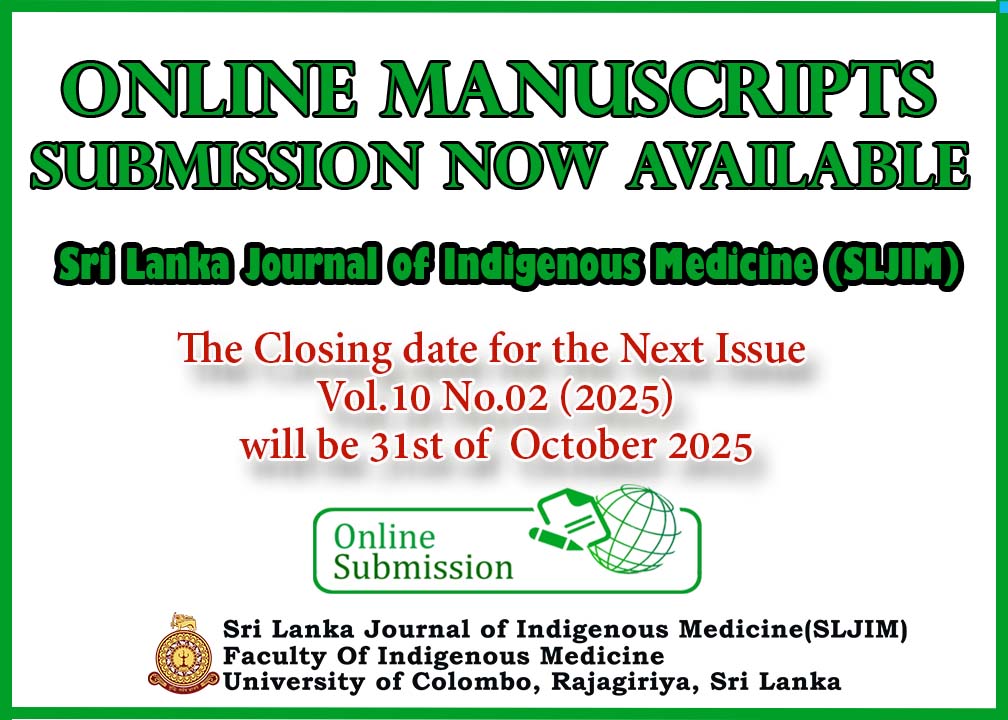About the Journal
Sri Lanka Journal of Indigenous Medicine (SLJIM), published by Faculty of Indigenous Medicine, University of Colombo, visualize to prosper across the continents by providing a magnificent platform to publish original research reports in English in all areas of basic scientific and clinical research on Indigenous/ Traditional system of Medicine, Medicinal plants, Ayurvedic and Pharmaceutical science etc. Further the journal encourage the submission of papers relevant to multidisciplinary clinical studies on curative and preventive aspects, historical, literal, cultural, and socioeconomic perspectives. The journal also publishes invited review papers, book reviews and short communications. The submission of a manuscript will be taken to imply that the work is original, and it or a similar paper (other than an abstract) has not been, and will not be submitted elsewhere for publication. The Sri Lankan Journal of Indigenous Medicine (SLJIM) Peer-reviewed bi-annual research journal for publication free of charge.
Announcements
Current Issue

Cover story
Neeramulliya
Botanical name: Hygrophila auriculata
Family: ACANTHACEAE
Vernacular names: Sinhala: Neeramulliya, Katu ikiriya, Ikiriya; Sanskrit: Gokantha, Kokilaksha; English: Marsh barbel; Tamil: Vayalchulli, Neermulli; Hindi: Bhankari
Hygrophila auriculata is a spiny herbaceous shrub that grows in marshes and on the edges of water bodies; it has numerous medicinal uses, the leaves can be eaten as a vegetable, and the flowers produce nectar that attracts bees and butterflies 1 .
This is a perennial aquatic herb native to Sri Lanka and tropical Asia. Erect stem, 1.25m high, armed with axillary spines to 2-4 cm long. Leaves in whorls of six, elliptic lanceolate, acute at apex, entire margines, hispid above. Flowers 6-8 in a whorl, bracts lanceolate, corolla purple 2 . The plant is used in cancer and tubercular fistula. Root and seeds used as tonic, for asthma and dysentery. The leaf, root and seed of this plant are traditionally used for the treatment of inflammation, jaundice, hepatic obstruction, urinary infection, oedema, gout, diabetes, bacterial infection etc. 3
Phytochemically, the whole plant contains phytosterols, tannins, carbohydrates, flavonoids, terpenoids, and sterols. Phalnikar et al., Analyzed the oil from the seeds and reported the presence of uronic, palmitic, stearic, oleic, and linoleic acids. Apigenin-7-O-glucuronide and apigenin7-oglucoside were isolated from the flowers and lupeol, betulin, and stigmasterol were isolated from the plant. Alkaloids, steroids, tannins, proteins, flavonoids, carbohydrates, fats, and oils were isolated from the roots. Moreover, the leaves show the presence of alkaloids, carbohydrates, proteins, steroids, glycosides, flavonoids, tannins, phenolic compounds, fats, and oils 3 .
References
1. Bareke, T. & Addi, A. 2022. Quantifying nectar secretion potential of Hygrophila auriculata (Schum.) Heine (Acanthaceae), and Salvia leucantha Cav. (Lamiaceae) for honey production. Advances in Agriculture: 1-8.
2. Kress, W.J., De Filipps, R.A., Farr, E. & Kyi, D.Y.Y. (2003).A Checklist of the Trees, Shrubs, Herbs and Climbers of Myanmar. Contributions from the United States National Herbarium 45: 1-590. Smithsonian Institution.
3. Dhanalakshmi S, Harikrishnan N, Srinivasan N, Pandian P, Tanisha BA, Kumar MT, et al. A Perspective Overview on Hygrophila auriculate. Pharmacogn J. 2020;12(6) Phcogj.com Suppl:1748-52.
Cover story by Prof. K.P.K.R. Karunagoda
Photographed by Mr. Thusitha Jayarathne
Cover page designed by Mr. K.K.P.R.K. Kohombakanda


